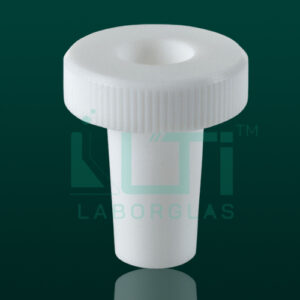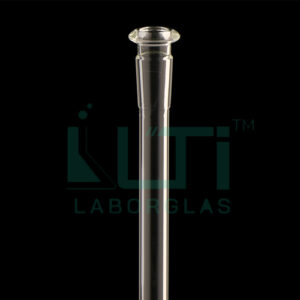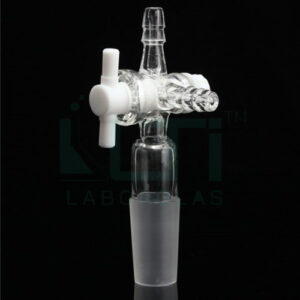- Made from ASTM E-438 Type 1, Boro 3.3 heat resistance glass
- Used in Rotary Evaporator
| PART No. | Capacity (ml) | Socket Size | Overall Height (mm) | PACK Qty. |
| 5480-10 | 10 | 14/20 | 60 | 1 |
| 5480-25 | 25 | 14/20 | 80 | 1 |
| 5480-25-A | 25 | 24/40 | 100 | 1 |
| 5480-50 | 50 | 14/20 | 95 | 1 |
| 5480-50-A | 50 | 19/22 | 95 | 1 |
| 5480-50-B | 50 | 24/40 | 104 | 1 |
| 5480-100 | 100 | 14/20 | 107 | 1 |
| 5480-100-A | 100 | 24/40 | 130 | 1 |
| 5480-200 | 200 | 24/40 | 135 | 1 |
| 5480-250 | 250 | 14/20 | 136 | 1 |
| 5480-250-A | 250 | 24/40 | 156 | 1 |
| 5480-500 | 500 | 24/40 | 175 | 1 |
| 5480-1000 | 1000 | 24/40 | 205 | 1 |
Here are some common uses for evaporating flasks in a laboratory setting:
- Rotary Evaporation:
- One of the primary applications of evaporating flasks is in rotary evaporation. This is a technique used to gently and efficiently remove solvents from a sample under reduced pressure and controlled temperature. The sample is placed in the evaporating flask, and a rotating mechanism facilitates the evaporation process.
- Concentration of Solutions:
- Evaporating flasks are often used to concentrate solutions by removing excess solvent. This can be important in various laboratory processes, such as preparing samples for analysis or isolating specific compounds from a mixture.
- Sample Preparation:
- Evaporating flasks are employed in sample preparation procedures, especially when dealing with samples that need to be concentrated before further analysis. This is common in analytical chemistry, biochemistry, and environmental testing.
- Solvent Recovery:
- In certain applications, evaporating flasks can be used for solvent recovery. After the solvent evaporates from the sample, it can be condensed and collected for reuse, reducing costs and environmental impact.
- Extraction Processes:
- Evaporating flasks can be part of extraction processes where a solvent is used to extract compounds from a solid or liquid matrix. After the extraction, the solvent may be evaporated to leave behind the extracted compounds.
- Drug Discovery and Synthesis:
- In pharmaceutical research and development, evaporating flasks are utilized during the synthesis of new compounds and the concentration of reaction mixtures. This aids in the purification and isolation of desired products.
- Residue Analysis:
- Evaporating flasks are used in residue analysis, where the goal is to concentrate a sample to detect and quantify trace amounts of substances. This is common in environmental monitoring and forensic analysis.
- Organic Chemistry Synthesis:
- Synthetic chemists often use evaporating flasks during the synthesis of organic compounds. The removal of solvents is a crucial step in obtaining pure products.





